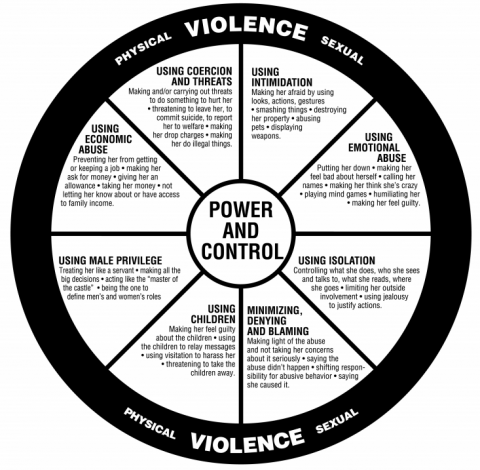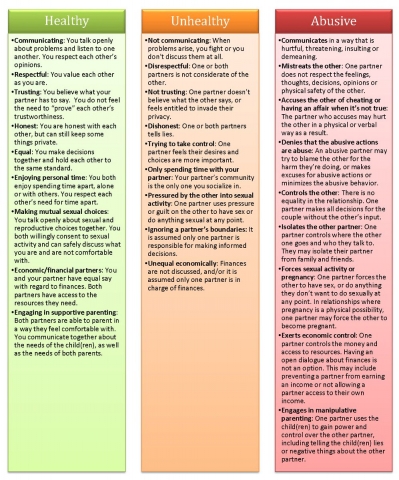
Overview
Case management is offered to all clients at Onslow Victims Center free of charge to them. We provide confidential support services, safety planning, advocacy, and self-sufficiency to survivors and their families. The program successfully promotes safety for mothers and children. Each client also receives advocacy/referral services to help with obtaining the appropriate community resources (financial assistance, emotional stability, and educational benefits).
When a client is referred from any community agency to the Onslow Victims Center, all parties receive case management, counseling/education, referral and follow-up. Community agency referrals also have access to other resources and programs available throughout the center. Each client referred by another community agency, must complete three domestic violence educational sessions and follow-up to stay in compliance with the program. Counseling/advocacy services are free and ongoing even if the case is closed. Letters of conclusion will be given to verify or finalize services. Clients must complete a safety plan as part of the program, which increases safety and give strategies in preparing them in advance for the possibility of further violence.
Please click here for a safety plan that you can personalize to fit whatever situation you are in.
Assessment Tools for Domestic Violence
*Non-offending Parent/Adult Victim Domestic Violence Assessment
The purpose of this tool is to help assess safety, risk, strengths and needs.
His or her answers will provide useful information about the power and control within the relationship and the potential danger involved. If the answers indicate that violence is present in the family, continued assessment of severity and potential lethality will be implemented, as well as a safety plan for that client.
The main goal with this assessment is to determine just how dangerous the relationship is and then make the proper plans to either remove the client from the danger or plan ways to ensure their safety.
*Domestic Violence Perpetrator Evaluation
The purpose of this tool is to help assess safety, risk, strengths and needs. It may be used to assist in decision making and service planning. Assessing the dangerousness of the alleged perpetrator is important; doing so protects everyone involved and lessens the risk for children and the non-offending parent/adult victim.
Domestic Violence is defined as a deliberate pattern of behavior used by a person in an intimate relationship to intimidate his or her partner and thereby gain or maintain power and control. This behavior may occur during the relationship or even after the relationship has ended.
Types of Domestic Violence:
- Physical Abuse: harming or threatening to do bodily, physical harm to a partner.
- hitting, spitting, damaging personal property, injuring animals, throwing things, using a weapon, pulling hair
- Emotional Abuse: saying or doing something to the other person that causes the person to be afraid and/or have lower self-esteem. Trying to manipulate or control the person's thoughts or feelings.
- name calling, threatening, isolating their partner from friends/family, monitors where their partner goes and with who, excessive and unwanted texts/calls/emails/DMs
- Sexual Abuse: any form of sexual activity without consent or against someone's will.
- rape, controls what their partner wears, accuses partner of cheating
- Verbal Abuse: words used to intentionally hurt, frighten, or threaten another person. This is often the first stage of abuse.
- threats, yelling, swearing, blames partner for abuse, tells lies about partner
- Gaslighting: manipulating someone by psychological means to make them question/doubt their own sanity.
- Financial Abuse: controlling all financial decisions in the relationship without the consent of the partner.
- not allowing their partner to work, controlling all financial decisions, harassing partner at work, destroying partner's credit
It’s not always easy to tell at the beginning of a relationship if it will become abusive.
In fact, many abusive partners may seem perfectly normal in the early stages of a relationship. Possessive and controlling behaviors don’t always appear overnight, but rather emerge and intensify as the relationship grows.
Domestic violence doesn’t look the same in every relationship because every relationship is different. But one thing most abusive relationships have in common is that the abusive partner does many different kinds of things to have more power and control over their partner.
Some of the signs of an abusive relationship include a partner who:
- Tells you that you can never do anything right
- Shows extreme jealousy of your friends and time spent away
- Keeps you or discourages you from seeing friends or family members
- Insults, demeans or shames you with put-downs
- Controls every penny spent in the household
- Takes your money or refuses to give you money for necessary expenses
- Looks at you or acts in ways that scare you
- Controls who you see, where you go, or what you do
- Prevents you from making your own decisions
- Tells you that you are a bad parent or threatens to harm or take away your children
- Prevents you from working or attending school
- Destroys your property or threatens to hurt or kill your pets
- Intimidates you with guns, knives or other weapons
- Pressures you to have sex when you don’t want to or do things sexually you’re not comfortable with
- Pressures you to use drugs or alcohol

The Power and Control Wheel is a visual demonstration of what happens in abusive relationships.
Domestic violence and abuse stem from a desire to gain and maintain power and control over an intimate partner. Abusive people believe they have the right to control and restrict their partners, and they may enjoy the feeling that exerting power gives them. They often believe that their own feelings and needs should be the priority in their relationships, so they use abusive tactics to dismantle equality and make their partners feel less valuable and deserving of respect in the relationship.
No matter why it happens, abuse is not okay and it’s never justified.
Abuse is a learned behavior. Sometimes people see it in their own families. Other times they learn it from friends or popular culture. However, abuse is a choice, and it’s not one that anyone has to make. Many people who experience or witness abuse growing up decide not to use those negative and hurtful ways of behaving in their own relationships. While outside forces such as drug or alcohol addiction can sometimes escalate abuse, it’s most important to recognize that these issues do not cause abuse.
People who have never been abused often wonder why a person wouldn’t just leave an abusive relationship. They don’t understand that leaving can be more complicated than it seems.
Leaving is often the most dangerous time for a victim of abuse, because abuse is about power and control. When a victim leaves, they are taking control and threatening the abusive partner’s power, which could cause the abusive partner to retaliate in very destructive ways.
Aside from this danger, there are many reasons why people stay in abusive relationships. Here are just a few of the common ones:
- Fear: A person may be afraid of what will happen if they decide to leave the relationship.
- Believing Abuse is Normal: A person may not know what a healthy relationship looks like, perhaps from growing up in an environment where abuse was common, and they may not recognize that their relationship is unhealthy.
- Fear of Being Outed: If someone is in an LGBTQ relationship and has not yet come out to everyone, their partner may threaten to reveal this secret.
- Embarrassment or Shame: It’s often difficult for someone to admit that they’ve been abused. They may feel they’ve done something wrong by becoming involved with an abusive partner. They may also worry that their friends and family will judge them.
- Low Self-Esteem: When an abusive partner constantly puts someone down and blames them for the abuse, it can be easy for the victim to believe those statements and think that the abuse is their fault.
- Love: So often, the victim feels love for their abusive partner. They may have children with them and want to maintain their family. Abusive people can often be charming, especially at the beginning of a relationship, and the victim may hope that their partner will go back to being that person. They may only want the violence to stop, not for the relationship to end entirely.
- Cultural/Religious Reasons: Traditional gender roles supported by someone’s culture or religion may influence them to stay rather than end the relationship for fear of bringing shame upon their family.
- Language Barriers/Immigration Status: If a person is undocumented, they may fear that reporting the abuse will affect their immigration status. Also, if their first language isn’t English, it can be difficult to express the depth of their situation to others.
- Lack of Money/Resources: Financial abuse is common, and a victim may be financially dependent on their abusive partner. Without money, access to resources or even a place to go, it can seem impossible for them to leave the relationship. This feeling of helplessness can be especially strong if the person lives with their abusive partner.
- Disability: When someone is physically dependent on their abusive partner, they can feel that their well-being is connected to the relationship. This dependency could heavily influence their decision to stay in an abusive relationship
It is hard to know what to do when a loved one is in an abusive relationship. Remember these key tips when trying to help:
Acknowledge that they are in a very difficult and scary situation, be supportive and listen
Let them know that the abuse is not their fault. Reassure them that they are not alone and that there is help and support out there. It may be difficult for them to talk about the abuse. Let them know that you are available to help whenever they may need it. What they need most is someone who will believe and listen.
Be non-judgmental
Respect your friend or family member’s decisions. There are many reasons why victims stay in abusive relationships. They may leave and return to the relationship many times. Do not criticize their decisions or try to guilt them. They will need your support even more during those times.
If they end that relationship, continue to be supportive of them
Even though the relationship was abusive, your friend or family member may still feel sad and lonely once it is over. They will need time to mourn the loss of the relationship and will especially need your support at that time.
Encourage them to participate in activities outside of the relationship with friends and family
Support is critical and the more they feel supported by people who care for them, the easier it will be for them to take the steps necessary to get and stay safe away from their abusive partner. Remember that you can call the hotline to find local support groups and information on staying safe.
Help them develop a safety plan
Check out our information on creating a safety plan for wherever they are in their relationship — whether they’re choosing to stay, preparing to leave, or have already left.
Encourage them to talk to people who can provide help and guidance
Find a local domestic violence agency that provides counseling or support groups. Call us at 1-800-799-SAFE (7233) to get a referral to one of these programs near you. Offer to go with them. If they have to go to the police, court or lawyer’s office, offer to go along for moral support.
Remember that you cannot ‘rescue’ them
Although it is difficult to see someone you care about get hurt, ultimately they are the one who has to make the decisions about what they want to do. It’s important for you to support them no matter what they decide, and help them find a way to safety and peace.

